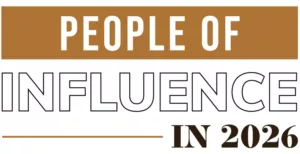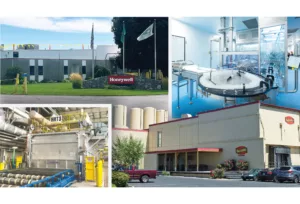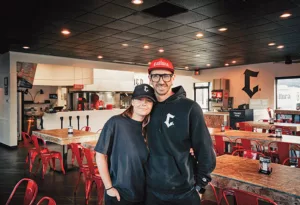
Home » Promoting teeth-implant process as denture alternative
Promoting teeth-implant process as denture alternative
Deer Park dentist melds new method, 3-D imaging

July 2, 2015
Targeting people with missing or failing teeth who are eager to end tooth-related pain and to regain a healthy smile, a Deer Park dentist is touting the benefits of an alternative to dentures and “partials”—called All-On-4—that involves restoring a full arch of teeth with as few as four implants.
The whole process can take as little as six months to a year from start to finish, and patients are never without teeth during that time, says the dentist, Dr. Greg Miller, of Greg Miller, DDS Advanced Dental Care.
“That’s because the new technologies allow for immediate placement of implants (after failing teeth have been extracted),” Miller says.
A temporary bridge then is attached immediately, so patients “leave with teeth,” rather than having to go without them for a time while they wait for their jaw bone to heal and for bone to grow around the implanted titanium screws, he says.
“The whole purpose of this procedure is you don’t have dentures, and you’re able to taste and talk, and it feels like your natural teeth,” Miller says.
The cost of providing patients what he calls the next best alternative to natural teeth isn’t cheap, running into the tens of thousands of dollars per arch.
“It’s a significant investment that varies on the case,” Miller says, but he adds that patients often have spent more than that amount on their teeth before going through the implant procedure.
He contends that the cost typically isn’t an obstacle for patients he sees who have been in chronic pain for years due to failing teeth and who are looking something more aesthetically pleasing and less limiting than the options of the past.
“They don’t want dentures. They don’t want partials. They’ve never had an option to have a natural smile that’s permanent, other than something that’s removable,” he says.
Also, comparing the cost with that of a surgical procedure in which other body parts are replaced with prosthetics, he says, “It’s like getting a knee replacement, but you’re going to show it to everybody.”
He cites the example of a woman who came to him who was in pain due to multiple failing bridges and an abscess in her upper arch and who found the implant process to be easier than she expected and was delighted with the end result.
Miller contends the implants provide patients with a significant enhancement of their overall quality of life, including by restoring their ability to eat all types of foods, even those that are crunchy or sticky.
Dental implants essentially are artificial tooth roots inserted in the jaw to replace missing teeth. They act as an anchor for a prosthetic tooth or crown or for a set of prosthetic teeth. The replacement teeth typically have a metal substructure, with a porcelain or acrylic surface. The new restorations are securely attached to the implants, eliminating the need to use messy adhesives or overnight cleaning cups, such as with dentures. The replacement teeth are only removed by a dental professional for periodic cleaning.
Today, implants with attached crowns are a preferred method for treating tooth loss because they function the same as natural teeth and help preserve the jaw structure by preventing atrophy from bone loss, claims the Chicago-based American Academy of Implant Dentistry.
Bridgework and dentures address the cosmetic problem of missing teeth, but don’t prevent bone loss. According to the AAID and the American Academy of Periodontology, also based in Chicago, dental implants integrate with the jawbone through a process called osseointegration, helping to keep the bone healthy and intact. When natural teeth are missing, the body senses that the jawbone is no longer necessary and begins to dissolve it away. That deterioration can result in facial collapse, causing the lips to fold in and the lower face to wither up, which might make a person look much older than he or she is.
The American Academy of Implant Dentistry says on its website that only about 10 percent of all U.S. dentists place implants, but that number is increasing. It also says the dental implant and prosthetic market in the U.S. is projected to reach $6.4 billion by 2018.
Miller is one of an increasing number of implant dentists who now use 3-D images and implant surgical planning software to construct a vivid map of the patient’s mouth, pinpoint potential problems, and plan the implant procedure in advance.
He says his practice uses core-beam computed tomography (CBCT) to create 3-D scans of the jaws, teeth, and sinuses.
“This new 3-D imaging allows implants to be placed with more accuracy,” he says. “I can virtually place each implant into its optimal location in relation to the nerves or sinuses and avoid formerly unseen bone anomalies. On surgery day, a custom surgical guide is used to place the implant in the exact location I planned on the computer.”
Miller says the trademarked All-On-4 system came to the U.S. from Portugal several years ago, and just now is getting firmly established here.
His 11-year-old dental practice is located at 309 W. Crawford St. in Deer Park and employs 11 people, counting one other longtime Spokane-area dentist, Dr. Gary Kelly, who he says has 30 years of teeth restoration experience and joined him after coming out of retirement.
Of the implant process, including the extraction of failing teeth, Miller says, “We do it all here, in one place,” which he describes as uncommon. Patients typically are placed under intravenous sedation for the whole procedure, which typically takes four to eight hours and includes extracting the old teeth, placing the implants, and installing temporary implant-supported bridges, he says.
Kelly creates the new teeth, designed specifically for each patient’s mouth, over a roughly one-month period prior to surgery, Miller says. Then, he says, “While I’m doing the surgery, when the implants are in, I will do an impression of the prosthesis over the implants.”
Over a period of two to three hours, with the patient still under sedation, Kelly uses that impression to create the temporary prosthesis that that patient will leave with, Miller says. Part of the process also involves placing some bone material from a tissue bank around the implant, and suturing the surrounding tissue.
“The tissue bank bone only acts as a scaffolding for your body to replace with its own bone,” Miller says.
The surgical procedure is followed by a roughly six-month healing period and a month or two to develop the patient’s final prosthesis, he says.
Originally from Huntington Beach, Calif., Miller served in the U.S. Air Force from 1998 to 2005, the first three years of that in active duty at the U.S. Air Force Academy, in Colorado Springs, Colo., and Malmstrom Air Force Base, in Great Falls, Mont., and became a dentist during that time. He graduated from the University of Southern California School of Dentistry in 2001 and completed an advanced education in general dentistry at the Air Force Academy. He received additional training in implant-supported dentistry through continuing education classes.
He began practicing in Deer Park in 2004, saying he moved his family there because it seemed like “just an ideal community to raise a family.”
Miller estimates that implant-related work currently accounts for about a quarter of the dental services his practice provides. He says he envisions it eventually growing to a third or even half of the work he does as interest in implants as an alternative to dentures continues to grow.
Latest News Special Report Health Care
Related Articles
Related Products


_web.webp?t=1764835652)
